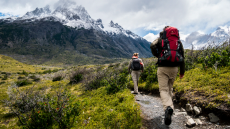More evidence for natto/ vitamin K bone health benefits
of vitamin K2, could reduce bone loss in post-menopausal women by
as much as 80 per cent, says research from Japan.
The representative cohort study reports that women with a dietary intake of more than four packets of natto per week reduced bone mass loss at the top of the thigh bone (femoral neck) and in the lower arm (radius) by over 80 per cent and 60 per cent, respectively.
There is a growing body of science linking vitamin K, considerably less well-known than vitamins A to E, to benefiting bone health as it influences the secondary modification of osteocalcin, a protein needed to bind calcium to the bone matrix.
There are two main forms of vitamin K: phylloquinone (vitamin K1) which is found in green leafy vegetables such as lettuce, broccoli and spinach, and makes up about 90 per cent of the vitamin K in a typical Western diet; and menaquinones (vitamins K2), which make up about 10 per cent of Western vitamin K consumption and can be synthesised in the gut by microflora.
Menaquinones (MK-n: with the n determined by the number of prenyl side chains) can also be found in the diet; MK-4 can be found in animal meat, MK-7, MK-8, and MK-9 are found in fermented food products like cheese, and natto is a rich source of MK-7.
MK-4 is distinct from other MKs because it not a major constituent of the spectrum of MKs produced by gut microflora, but can be derived from K1 in vivo.
A synthetic form of vitamin K, known as K3, does exist but is not recommended for human consumption.
The new study, published in the May issue of the Journal of Nutrition (Vol. 136, pp. 1323-1328), followed 944 healthy, free-living women aged between 20 and 79 for three years. Consumption of natto, tofu and other soybean products, recorded by food frequency questionnaires (FFQ) and interviews with trained dietitians, was correlated with bone mass density measurements, taken at the start and the end of the study using a dual-energy X-ray absorptiometer.
The women were divided into pre-menopausal (394 women, average age 34 at baseline) and post-menopausal (550 women, average age 64.2 at baseline), and no significant benefit for skeletal muscle was observed for the pre-menopausal subjects.
For post-menopausal women, intake of more than four packs of natto per week (in Japan, natto is sold in 40 gram packs, which are said to typically contain about 350 micrograms of MK-7) was associated with reduced bone density loss at both the femoral neck and distal third of the radius, compared to women who didn't consume any natto.
The protective effects also appeared to increase with increasing age. For example, post-menopausal Japanese women in their fifties eating more than four packs of natto per week had a bone mineral density (BMD) loss in the femoral neck of one per cent per year, compared to 1.6 per cent per year for the same age and a natto-free diet.
Women in their seventies had BMD losses of 0.5 per cent per year when consuming more than four packs per week, while septuagenarians consuming a natto-free diet had average BMD losses of 1.8 per cent per year.
"Natto intake may help prevent post-menopausal bone loss through the effects of menaquinone-7 or bioavailable isoflavones, which are more abundant in natto than in other soybean products," wrote lead author Yukihiro Ikeda from the Kinki University School of Medicine in Osaka.
While the authors appear to favour MK-7 as the active compound, they could not rule out the effect of isoflavones. Tofu intake however was not linked to decreased bone loss. The benefit of natto may be due to the presence of different isoflavones in natto than tofu, particularly isoflavone aglycone, in addition to MK-7, said the authors.
Other studies have reported similar links between natto intake and BMD, said the scientists. "These studies support our speculation that the habitual intake of phylloquinone or menaquinones attenuates bone loss at the femoral neck, and may lead to reduction in the incidence of hip fractures in postmenopausal women," wrote Ikeda.
There are several limitations with this study, including the use of FFQs that only listed calcium-rich foods, and that natto consumption was based on interviews based on these questionnaires. It should also be noted that the study population were from three selected communities in Japan, and may not be representative of the whole Japanese people, although no differences in BMD and body weight were observed between the subjects and the general population.
The researchers called for further study to allow for confounding factors, to assess if natto reduces the risk of hip fracture, and "to address whether the effect of menaquinone-7 or of the isoflavones is the primary mechanism."
Osteoporosis is estimated to affect about 75m people in Europe, the USA and Japan. According to the International Osteoporosis Foundation, the total direct cost of osteoporotic fractures is €31.7bn in Europe, and 17.5bn in the US (2002 figure). The total annual cost of osteoporosis in the UK alone is over £1.7bn (€2.5bn), equivalent to £5m (€7.3m) each day.













